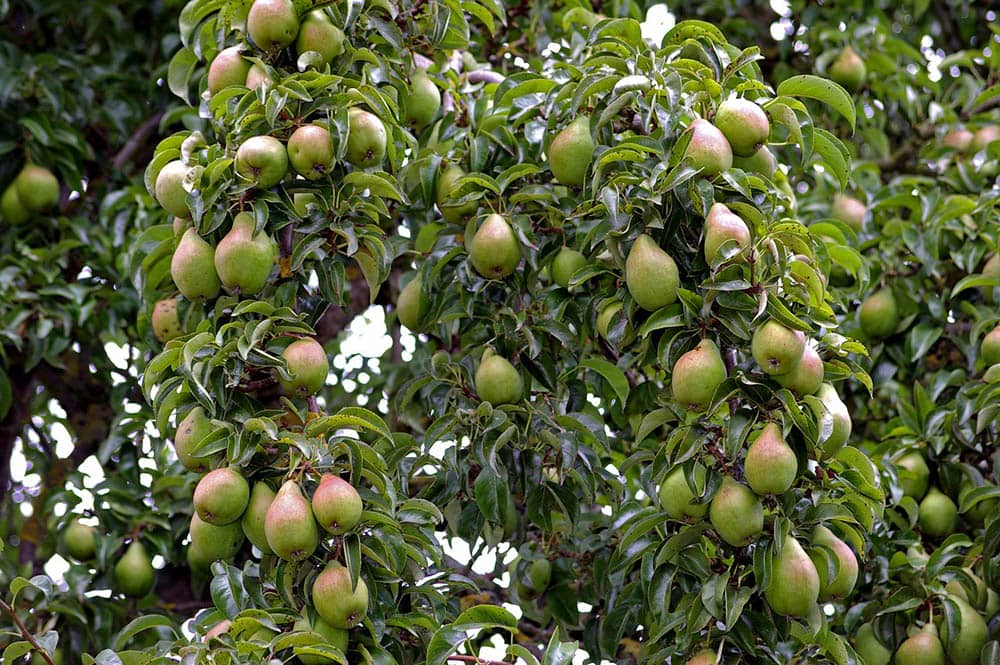6 Companion Plants for Fruit Trees (With Pictures)
-
Codee Chessher
- Last updated:

Fruit trees take years to grow but bear fruit every year once they mature. While you can’t speed up the process, you can give your fruit trees the best possible chance of thriving by utilizing companion plants.
Sadly, there’s no best choice for all trees or situations, so you’ll have to determine which ones will be most helpful to your fruit trees. Let’s dive into the best and worst companion plants for fruit trees below.
 What Is Companion Planting?
What Is Companion Planting?
It might sound funny, but yes, plants love to have companions! Specifically, companion plants that complement your plant’s unique needs. Flowers, for example, are excellent companions for attracting pollinators and other beneficial wildlife to your garden. Others may repel destructive pests, provide nutrients, or act as living mulch.
Perhaps the most well-known companion crop is the Three Sisters, historically grown by Native Americans. It consists of corn, climbing beans, and squash. Corn serves as a trellis for the beans, which act as a nitrogen fixer for the soil, and the squash’s large leaves shade the ground and preserve moisture in the soil.
Choosing suitable companion plants will help your fruit and vegetable plants produce more and stay healthy as they grow. Depending on the garden-related problems you face, you may opt for only one or as many companion plants as you want.
The 6 Companion Plants for Fruit Trees
1. Nasturtium

- repels codling moths, acts as ground cover, attracts beneficial wildlife
Although they prefer to plague apple orchards, codling moths don’t discriminate and will infest multiple types of fruit trees. To repel them from your fruit tree, plant nasturtium around the base of your tree. It also spreads quickly and acts as ground cover, preserving moisture in the soil.
Most people recognize these as weeds, but they’re also very useful in any garden or orchard. Lastly, nasturtium is very nectar-rich and will attract invaluable pollinators and other beneficial wildlife.
2. Hyssop

- increases fruit yield, discourages pests
Hyssop is an aromatic bitter herb used in herbal remedies for respiratory and gastrointestinal problems. The willowy purple flowers are attractive in the garden and help repel common fruit tree pests.
More interestingly, hyssop is also thought to increase fruit yield for fruit trees, grapes, and berries. For the best results, alternate hyssop with an Allium plant like onion, garlic, or chives. That gives you two layers of pest protection for your precious fruit.
3. Chives

- repels pests, attracts pollinators, antifungal
Chives are one of the best companions for fruit trees because they attract pollinators with their attractive blooms but repel pests with their distinct onion-like odor. Chives also provide sulfur to the soil, which provides antifungal and antimicrobial protection to vulnerable fruit tree roots.
Chives are very popular companions for apple trees because they help prevent apple scab, a fungal infection.
4. Comfrey

- living mulch, attracts pollinators, pulls nutrients into the soil
Comfrey has deep roots and grows tall. The former means that it helps pull nutrients up for nearby fruit and veggie plants, while the latter means it falls over and decomposes to add more nutrients.
While decomposing, the comfrey acts as a living mulch, shading the soil and preserving moisture. The only drawback of comfrey is that it spreads very aggressively, so you might want to go with a variety that has sterile seeds if you have limited soil space.
5. Lavender

- attracts beneficial wildlife, repels pests, prevents bacterial infection
Lavender is an edible, aromatic, and pretty addition to any garden, and its pest-repelling oil will keep away slugs, snails, and other pests that tend to plague fruit trees.
Lavender’s essential oils can be used in potpourri and possess antimicrobial properties that extend to nearby fruit trees. Best of all, pollinators love lavender plants and will flock to your garden.
6. Dandelion

- attracts beneficial wildlife, ground cover
Dandelions and other wildflowers are always welcome in fruit orchards, spreading to shade the soil and preserve soil moisture. They’re also favorites of pollinators and beneficial predators like birds and wasps. For the best results, you want to use dandelions close to your fruit trees and vegetable plants.
Worst Companion Plants for Fruit Trees
While many plants are friendly alongside fruit trees, some are decidedly harmful. Let’s check out what you want to avoid planting near your fruit trees.
- Grass: Grass soaks up moisture and nutrients if planted near fruit trees, plus attracts rodents. So, use a rainproof grass killer 20–25 feet in a ring around fruit trees.
- Tomatoes: Tomatoes are heavy feeders that rob fruit trees of nutrients. If you want to grow both, use separate areas.
- Allelopathic Plants: Including walnut trees, some trees will stunt nearby fruit trees and other plants
Final Thoughts
Fruit trees don’t grow well in a sterile environment, preferring to share space with beneficial companions like wildflowers, Allium, and aromatic herbs. Strategically using these plants will greatly enhance the health and possibly even the yield of your trees, which means more delicious fruit for you.
Featured Image Credit: Pixabay
Contents
 What Is Companion Planting?
What Is Companion Planting?